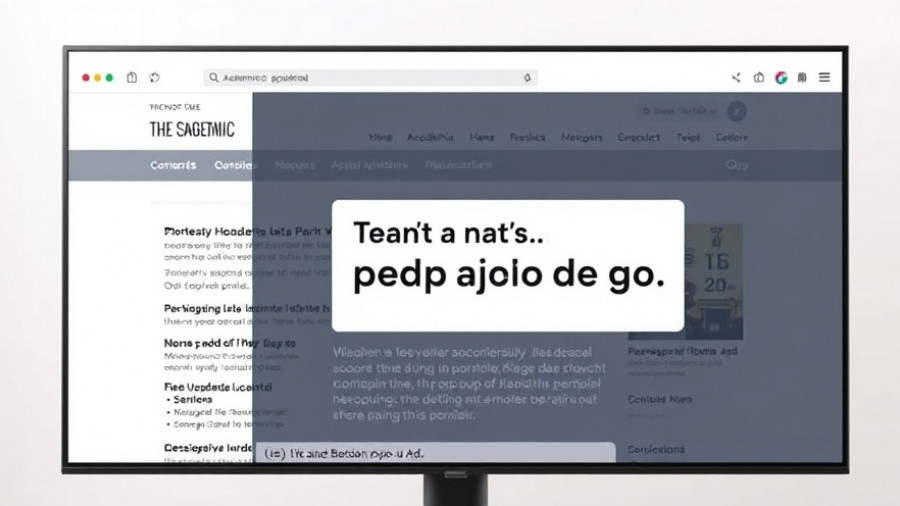
Microsoft's Shift in AI Strategy: Why It Matters
Microsoft's decision to incorporate Anthropic's AI alongside OpenAI's technology in its productivity suite signifies a pivotal shift in its strategy. This move, reported to stem from internal testing that found Anthropic's Claude Sonnet 4 outperformed OpenAI's offerings in specific tasks such as visual design and spreadsheet automation, illustrates Microsoft's commitment to adaptability in a rapidly evolving technological landscape. For users, this integration could mean enhanced features and a more robust set of tools at their disposal, fostering greater efficiency.
Examining the Role of Competition in AI Development
In a field characterized by fierce competition, the collaboration between Microsoft and Anthropic offers insights into how rivalries can drive innovation. For instance, while Microsoft previously relied exclusively on OpenAI, the addition of Anthropic reflects a strategic hedging against technological stagnation. By diversifying its AI portfolio, Microsoft aims to leverage distinct strengths from multiple companies, ultimately creating a more powerful suite of features. This competitive landscape not only accelerates advancements but also benefits consumers who enjoy improved products resulting from such rivalries.
The Impact of Cloud Partnerships on AI Accessibility
Part of this arrangement involves Microsoft accessing Anthropic's models via Amazon Web Services, highlighting an intriguing alliance between major players in the tech industry. This collaboration raises questions about cloud service dependencies and the limits of exclusivity in AI technologies. Microsoft's continued investment in OpenAI, amounting to over $13 billion, signals that it intends to maintain a substantial role in AI development. However, by also integrating Anthropic, Microsoft is ensuring that it can provide innovative solutions regardless of a single provider's shortcomings.
Measuring the Effectiveness of AI in Productivity Tools
Despite the excitement surrounding the integration of advanced AI models, studies such as one from the UK government questioning the productivity boost from OpenAI’s Copilot tools remind us of the complexities of measuring success in the realm of AI. It's crucial for Microsoft not only to implement these technologies but also to demonstrate tangible benefits to users. The skepticism surrounding Copilot's effectiveness highlights the need for continuous evaluation and iteration in AI tools to justify their use and expense.
Future Predictions: Evolving AI Capabilities in Office
As Microsoft prepares to unveil its new AI-integrated Office suite, predictions about the future of work remain front and center. Analysts speculate that the introduction of Anthropic's AI may render certain tasks more intuitive, streamlining workflows and potentially reshaping how businesses approach office productivity. In the coming months, companies utilizing Office 365 with these enhancements will provide critical feedback that could lead to further innovations in AI functionalities.
Conclusion: Embracing a New Era of AI Integration
The incorporation of Anthropic's Claude Sonnet 4 is a bold step for Microsoft, one that underscores the tech giant's desire to remain competitive and provide value to its users. As companies navigate these changes in AI technology, the impact on office productivity and workplace practices will surely evolve. For those looking to stay at the forefront of technological change, understanding these shifts is essential.
 Add Row
Add Row  Add
Add 




Write A Comment